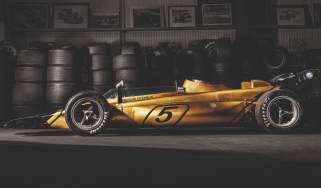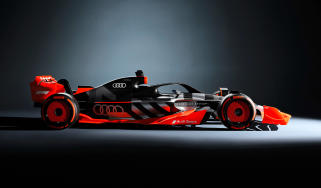Why the old Reims Grand Prix circuit is still an essential visit
Predictable it may be, but there’s a magic to Reims-Gueux that few other places offer
If social media platforms have become a little overwhelming in recent years, I can offer no greater therapy than Car Twitter.
This is much as it sounds: a group of enthusiasts, journalists, industry folk and others who collectively contribute to near-endless discussion on the short-form social media platform, on almost any automotive topic you can think of.
While it sometimes strays perilously close to the kind of discourse you’re probably trying to get away from – discussions involving a certain electric car company often hold a mirror up to wider society in an uncomfortable way – Car Twitter generally ranges from the friendly and easy going, to the knowledgeable, remarkable and eye-opening, usually in the space of just a few tweets.
> New Renault Megane RS review – 2018 hot hatch lives up to expectations
If it has one disadvantage, it’s that you can’t go a week without someone posting yet another picture of their current chariot in front of the old pit buildings at Reims in northern France. It’s usually accompanied by some self-aware caption about it being ‘obligatory’ (scroll down a few tweets and you’ll probably find the equally obligatory Eurotunnel carriage shot) or comments on the ongoing restoration of the buildings to something approximating their former glory.
Well, a couple of weeks back it was my turn to wheel out the clichés, as I stopped by on the way to an event just east of Paris.
I’d visited the circuit Reims-Gueux twice previously, first in around 2011 on my first trip down to the Geneva motor show as a freelance hack, and then again in 2015 on a European road trip with a friend. It probably won’t be another four years before I stop by again though, if only so I can admire the work of the small group of individuals known as Les Amis du Circuit de Gueux, who are painstakingly restoring, safeguarding and promoting the history of the old track.
On each visit, the buildings and surroundings have been just that little more accessible and safe than the last time, to the extent you can now reasonably navigate the old paddock or move around the imposing grandstands.
Recent work has refreshed the Lambert Pavilion to the east of the pitlane, where race timing was once conducted. Since 2018 alone the building has enjoyed a fresh coat of paint, reviving its bright BP markings, as well as being fully glazed. In the paddock the ‘Bloc Habitat’ is looking similarly fresh, while the old scoreboard, once perilously rusty, now wears a gleaming coat of white paint.
Overgrown grass, weeds and plants have been hacked away, allowing you to explore the paddock area, and while the grandstands still look tired, you can at least safely access them via a tunnel under the pits. Standing among the concrete monuments, imagining the whole area bristling with people and activity and with cigar-shaped racers howling past 50 or 60 years ago, is enough to send a shiver down your spine.
On my first trip I’d attempted to follow the rest of the track around, but had unknowingly driven only one short-lived permutation, the 1952 layout which connects the D26 to what is now the N31 but avoids going into the centre of Gueux itself. Most will be more familiar with the 5.2-mile, 1954-1972 permutation, which added the sharp Virage Muizon hairpin.
Today, you access it via a small junction just as the D26 begins to turn towards the main Route Nationale. From the junction the road peels gently right over the brow of a hill, before descending again with an amazing view of an arrow-straight, two-lane road stretching between two fields, once known as Bretelle Nord.
At the end is a gently banked left-hander, whose curve is today cut short in a dead-end road. Click on satellite view on Google Maps and you can still see a light mark through the fields where the circuit used to run.
Today, with no through traffic, it’s a peaceful, beautiful, and slightly eerie place to stop and contemplate those that used to race here. The narrowness is the first thing that hits you. Without modern laws, a high-speed lap would be unnerving even in a family hatchback, let alone the 300-horsepower, 518kg Brabham BT19 driven to victory by Jack Brabham on F1’s last visit in 1966 – wheel-to-wheel with similarly spirited drivers.
Aside from that newer section of N31, the whole circuit remains relatively untouched. There is no gift shop, no incongruously modern museum anywhere nearby. Urban development at Gueux hasn’t (yet) encroached upon the old track, so the fields and forests are much as they would have been in the circuit’s heyday, and while the buildings are undergoing restoration, it’s subtle and sympathetic.
Most of all, Reims-Gueux is an increasingly rare opportunity to explore a truly original and undeveloped circuit from the golden years of motorsport. And while it may be a somewhat predictable diversion for petrolheads mooching their way through northeastern France, I think it might also be an essential one.






